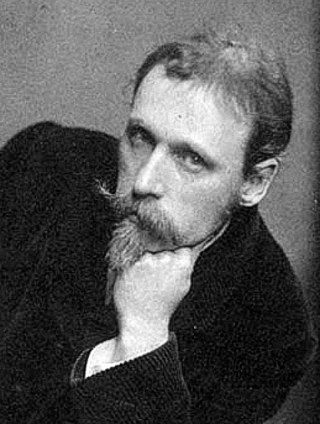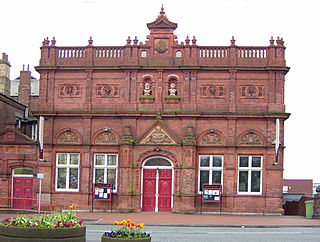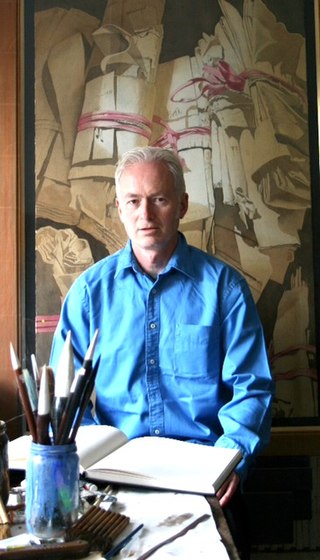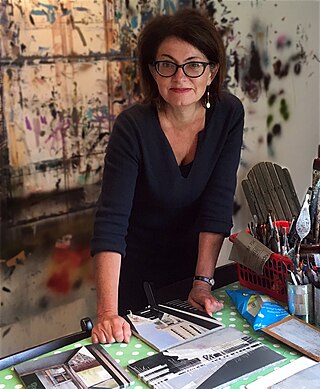
Joseph Mallord William Turner, known in his time as William Turner, was an English Romantic painter, printmaker and watercolourist. He is known for his expressive colouring, imaginative landscapes and turbulent, often violent marine paintings. He left behind more than 550 oil paintings, 2,000 watercolours, and 30,000 works on paper. He was championed by the leading English art critic John Ruskin from 1840, and is today regarded as having elevated landscape painting to an eminence rivalling history painting.

The Ashmolean Museum of Art and Archaeology on Beaumont Street in Oxford, England, is Britain's first public museum. Its first building was erected in 1678–1683 to house the cabinet of curiosities that Elias Ashmole gave to the University of Oxford in 1677. It is also the world's second university museum, after the establishment of the Kunstmuseum Basel in 1661 by the University of Basel.

Walter Crane was an English artist and book illustrator. He is considered to be the most influential, and among the most prolific, children's book creators of his generation and, along with Randolph Caldecott and Kate Greenaway, one of the strongest contributors to the child's nursery motif that the genre of English children's illustrated literature would exhibit in its developmental stages in the later 19th century.

The Guild of St George is a charitable Education Trust, based in England but with a worldwide membership, which tries to uphold the values and put into practice the ideas of its founder, John Ruskin (1819–1900).

Lowry is a theatre and gallery complex at Salford Quays, Salford, Greater Manchester, England. It is named after the early 20th-century painter L. S. Lowry, known for his paintings of industrial scenes in North West England. The complex opened on 28 April 2000 and was officially opened on 12 October 2000 by Queen Elizabeth II.

The Williamson Art Gallery and Museum is an art gallery and museum situated in Birkenhead, Merseyside, England and houses Wirral's art collection.

Joseph Edward Southall RWS NEAC RBSA was an English painter associated with the Arts and Crafts movement.

Herbert Art Gallery & Museum is a museum, art gallery, records archive, learning centre, media studio and creative arts facility on Jordan Well, Coventry, England.

Abbot Hall Art Gallery is an art gallery in Kendal, England. Abbot Hall was built in 1759 by Colonel George Wilson, the second son of Daniel Wilson of Dallam Tower, a large house and country estate nearby. It was built on the site of the old Abbot's Hall, roughly where the museum is today. Before the Dissolution of the Monasteries this was where the Abbot or his representative would stay when visiting from the mother house of St Mary's Abbey, York. The architect is unknown. During the early twentieth century the Grade I listed building was dilapidated and has been restored as an art gallery.
Sheffield, England, has a large population of amateur, working and professional visual artists and artworks.

York Art Gallery is a public art gallery in York, England, with a collection of paintings from 14th-century to contemporary, prints, watercolours, drawings, and ceramics. It closed for major redevelopment in 2013, reopening in summer of 2015. The building is a Grade II listed building and is managed by York Museums Trust.

The Fine Art Society is a gallery based in both London and in Edinburgh's New Town. The New Bond Street, London gallery closed its doors in August 2018 after being occupied by The Fine Art Society since February 1876, the entrance façade of which was designed in 1881 by Edward William Godwin (1833–1886).

The Higgins Art Gallery & Museum is the principal art gallery and museum in Bedford, Bedfordshire, England, run by Bedford Borough Council and the trustees of the Cecil Higgins Collection.

Wednesbury Museum and Art Gallery is a purpose-built Victorian art gallery in Wednesbury in the West Midlands of England. It is notable for its Ruskin Pottery collection and for hosting the first public display of the Stuckism art movement.
The Ruskin Gallery is a gallery within the Millennium Galleries in Sheffield, England.

Birmingham has a distinctive culture of art and design that emerged in the 1750s, driven by the historic importance of the applied arts to the city's manufacturing economy. While other early industrial towns such as Manchester and Bradford were based on the manufacture of bulk commodities such as cotton and wool, Birmingham's economy from the 18th century onwards was built on the production of finished manufactured goods for European luxury markets. The sale of these products was dependent on high-quality design, and this resulted in the early growth of an extensive infrastructure for the education of artists and designers and for exhibiting their works, and placed Birmingham at the heart of debate about the role of the visual arts in the emerging industrial society.

Hugh Buchanan is a Scottish watercolour painter, renowned for his detailed draughtsmanship and treatment of light and shadows in interiors, and for a sense of depth and space that is reminiscent of the work of Cotman and Piranesi.

Marguerite Horner is a British artist who won the 2018 British Women Artist Award. Her paintings aim to investigate, among other things, notions of transience, intimacy, loss and hope. She uses the external world as a trigger or metaphor for these experiences and through a period of gestation and distillation, makes a series of intuitive decisions that lead the work towards completion.

Mandy Payne is a member of the Contemporary British Painting group and is an artist with a primary interest in portraying the regeneration of inner city environments and the transitory nature of urban communities. Her themes include the contrasts between twentieth century inner-city social housing and modern gentrification.
Roanna Wells is a fine artist based in Sheffield, UK. Wells makes process based work in embroidery and watercolour.




















